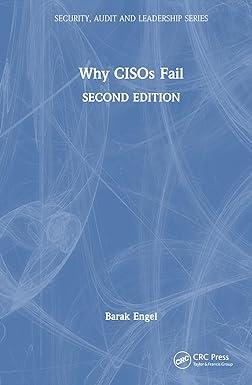Question
Timberway Furniture Company makes three different products: Tables Chairs Bookcases These products are made from three resources: Labor Wood Machine Time The profit per Table
Timberway Furniture Company makes three different products: Tables Chairs Bookcases
These products are made from three resources: Labor Wood Machine Time
The profit per Table sold is $40, the profit per Chair sold is $30, and the profit per Bookcase sold is $45. Per unit requirements for each of the resources is given in the following table, along with the total amount that is available for each resource:
| Resource | Table | Chair | Bookcase | Available |
| Labor | 2 | 1 | 3 | 60 hours |
| Wood | 15 | 5 | 10 | 400 board feet |
| Machine Time | 1 | 2 | 3 | 35 machine hours |
Excel
Decision Variables
| Table | Chair | Bookcase |
Objective
Parameters
| Profit | 40 | 30 | 45 | RHS |
| Labor | 2 | 1 | 3 | 60 |
| Wood | 15 | 5 | 10 | 400 |
| Machine Time | 1 | 2 | 3 | 35 |
Contraints
| Usage | Available | |
| 60 | ||
| 400 | ||
| 35 |
Part 1 Formulate a Linear Programming Model for this problem using the Bowls and Mugs model as a guide. Include all three of the components that make up a good LP model, i.e. decision variables, objective function, and constraints.
Part 2 Input the model you developed into the spreadsheet template posted to Canvas (or make one of your own). Identify the decision variables cells using the color YELLOW and identify the objective function cell using the color GREEN. Once your model is set up correctly in Excel, complete the appropriate input in Solver and run to obtain your best solution and include both an Answer Report and Sensitivity Report. Your spreadsheet should have ONLY ONE ANSWER REPORT and ONLY ONE SENSITIVITY REPORT.
Part 3 Using ONLY the Answer Report and Sensitivity Report you developed in your spreadsheet, answer the following questions. Note: Do NOT re-solve your model. All answers are to be derived from your ORIGINAL Answer Report and Sensitivity Report.
1. What is the optimal solution? 2. Which constraints are binding? 3. Which constraints are non-binding? How much is left of each non-binding resource? 4. What is the profit range for a Table such that the original optimal solution you found does not change? Between $__________ and $__________ 5. What is the profit range for a Chair such that the original optimal solution you found does not change (use 2 decimal places)? Between $__________ and $__________ 6. Currently we are not making any Bookcases. Profit per Bookcase would need to increase to what value before we would begin to make Bookcases? Greater than $__________ 7. How much additional profit do we make if the profit per Table increases by $20? 8. How much profit do we lose if the profit per Bookcase drops by $10? 9. How much is one additional board-foot of Wood worth?
Step by Step Solution
There are 3 Steps involved in it
Step: 1

Get Instant Access to Expert-Tailored Solutions
See step-by-step solutions with expert insights and AI powered tools for academic success
Step: 2

Step: 3

Ace Your Homework with AI
Get the answers you need in no time with our AI-driven, step-by-step assistance
Get Started


